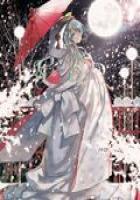THE OLDEST HOUSE
最古老的房子
SOME men were talking about houses.“How old is your house?”one of them asked me.“Five years old,”I replied.“Well,my house is over a hundred years old,”said the man.“It’s in Massachusetts.”
“Only a hundred years old!”exclaimed another man.“My house is two hundred years old.It’s in Virginia.”
“That doesn’t seem old to me,”still another man said.“My house is four hundred andfifty years old.”
Each one was trying to tell a bigger story than the other.
“Four hundred and fifty years old!”I cried.“How can that be?That’s before Americawas discovered,before there were any white men’s houses in this country.”“It isn’t in America,”he replied.“It’s in England.I’m an Englishman.”
“Oh,well,that’s different.If you count houses abroad,I’ve been in a house that’s a thousand years old.It’s a Church.It’s in France.”
“Only a thousand years old?”The Englishman seemed bent on going me one better.“I’ve been in a house built two thousand years ago.It’s in Greece—a temple.They call it the Parthenon.”
“Well,”said I,not to be outdone,“I can beat that.I’ve been in a house that is fivethousand years old—a house built for the dead.It’s in Egypt.They call it a pyramid.”“You win,”said the Englishman.“No one can beat that.”
And that’s true.The oldest houses in the world are the pyramids in Egypt—houses for the dead.But why are the oldest houses,houses for the dead?Where are the houses of the living—the houses they built five thousand years ago to live in?
They’re all gone—long,long ago—and the reason is this:A man expected to live only fifty years or so and he built his house out of wood or mud bricks to last only as long as he lived,so the wood houses have all rotted away and the houses made of mud brick have turned back to dust.But he expected to be a long time dead,so if he were a king,he built a house for himself to be dead in and he built it so that it would last till Judgment Day.
You see,the Egyptians,hundreds of years before Christ,believed in resurrection.They believed their dead bodies would sometime come to life again,so they built thepyramids out of stone to last till then,and they had their bodies embalmed—that is,made into what we call mummies—to last till then also.Now,the pyramids are still there in Egypt,but the mummies that were once in them are not in them any more.They have been stolen or have been taken away and put in museums—in museums for any one and every one to gaze upon,in spite of all the care that the tomb builder tool to have his body undisturbed till Judgment Day.We do not pay so much attention to how and where we are to be buried.Even kings and queens nowadays are buried in the ground with a monument over them or in a simple tomb.
There were over a hundred pyramids built near the river Nile by Egypt’s rulers,but the largest is one built by King Cheops about three thousand years before Christ was born.That’s about five thousand years ago.The pyramid is almost five hundred feet high.It used to be four hundred and eighty,to be exact,but the top has been broken off and it is now only four hundred and fifty-one.In spite of that,it is by far the largest stone building in the world—a mountain of stone.
The pyramid of Cheops is built of solid rock on a natural rock foundation,but as there was no rock near by for building the pyramid itself,it had to be brought from quarries some of which were fifty miles away and some five hundred miles away.Then it had to be dragged fifty miles or five hundred miles from the quarry.Some of the huge stones weighed more than a loaded freight car and it took several years to drag the rocks to the site of the pyramid.
You see,there was no machinery in those days—no pulleys or derricks,no tracks or trucks,no engines or mechanical contrivances—such as we have nowadays to lift and carry huge loads,so that every block of stone had to be pushed or pulled by sheer brute force.Hundreds of men tugged from in front and hundreds shoved from behind.And then each block had to be lifted and moved into place.Probably a roadway was built right up the side of the pyramid to where the block could be slid into position.It is supposed to have taken twenty years to build Cheops’s pyramid and they say the king employed over a hundred thousand men to do the job.
The outside of the pyramid when it was finished was smooth,polished stone—perhaps in bands of different colored granite,but long ago all this covering of polished stone was stolen and carried off to make other buildings,so that the sides of the pyramid are now rough,irregular steps,each one several feet high,and you can climb to the top on any side simply by climbing from one step to another.
The Great Pyramid,as we call it,if it were sliced through the center like a piece of cheese,would show three small rooms one above the other and some slanting passageways to the three rooms.The rest would be solid rock.See the picture below.
No.60-1THE GREAT PYRAMID(大金字塔)















